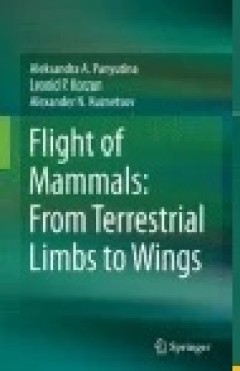Filter by

The Biology of the Avian Respiratory System
The central focus of this book is the avian respiratory system. The authors explain why the respiratory system of modern birds is built the way it is and works the way that it does. Birds have been and continue to attract particular interest to biologists. The more birds are studied, the more it is appreciated that the existence of human-kind on earth very much depends directly and indirectly o…
- Edition
- 1
- ISBN/ISSN
- 978-3-319-44153-5
- Collation
- Biologi
- Series Title
- -
- Call Number
- 570

The Evolution of the Primate Hand
This book demonstrates how the primate hand combines both primitive and novel morphology, both general function with specialization, and both a remarkable degree of diversity within some clades and yet general similarity across many others. Across the chapters, different authors have addressed a variety of specific questions and provided their perspectives, but all explore the main themes descr…
- Edition
- 1
- ISBN/ISSN
- 978-1-4939-3646-5
- Collation
- XI, 589, 64 illustrations in colour
- Series Title
- Developments in Primatology: Progress and Prospects
- Call Number
- -

21st Century Guidebook to Fungi
The mysterious world of fungi is once again unearthed in this expansive second edition. This textbook provides readers with an all-embracing view of the kingdom fungi, ranging in scope from ecology and evolution, diversity and taxonomy, cell biology and biochemistry, to genetics and genomics, biotechnology and bioinformatics. Adopting a unique systems biology approach - and using explanatory fi…
- Edition
- -
- ISBN/ISSN
- 9781108776387
- Collation
- -
- Series Title
- -
- Call Number
- -

Flight of Mammals: From Terrestrial Limbs to Wings
This book offers a new explanation for the development of flight in mammals and offers detailed morphological descriptions of mammals with flapping flight. The skeletomuscular apparatus of the shoulder girdle and forelimbs of tree shrews, flying lemurs and bats is described in detail. Special attention is paid to the recognition of peculiar features of the skeleton and joints. For the basic loc…
- Edition
- -
- ISBN/ISSN
- 978-3-319-08756-6
- Collation
- XXVII, 303 hlm.
- Series Title
- -
- Call Number
- -

Handbook of Evolutionary Thinking in the Sciences
The Darwinian theory of evolution is itself evolving and this book presents the details of the core of modern Darwinism and its latest developmental directions. The authors present current scientific work addressing theoretical problems and challenges in four sections, beginning with the concepts of evolution theory, its processes of variation, heredity, selection, adaptation and function, and …
- Edition
- -
- ISBN/ISSN
- 978-94-017-9013-0
- Collation
- XIX, 910
- Series Title
- -
- Call Number
- 570 HAN
 Computer Science, Information & General Works
Computer Science, Information & General Works  Philosophy & Psychology
Philosophy & Psychology  Religion
Religion  Social Sciences
Social Sciences  Language
Language  Pure Science
Pure Science  Applied Sciences
Applied Sciences  Art & Recreation
Art & Recreation  Literature
Literature  History & Geography
History & Geography